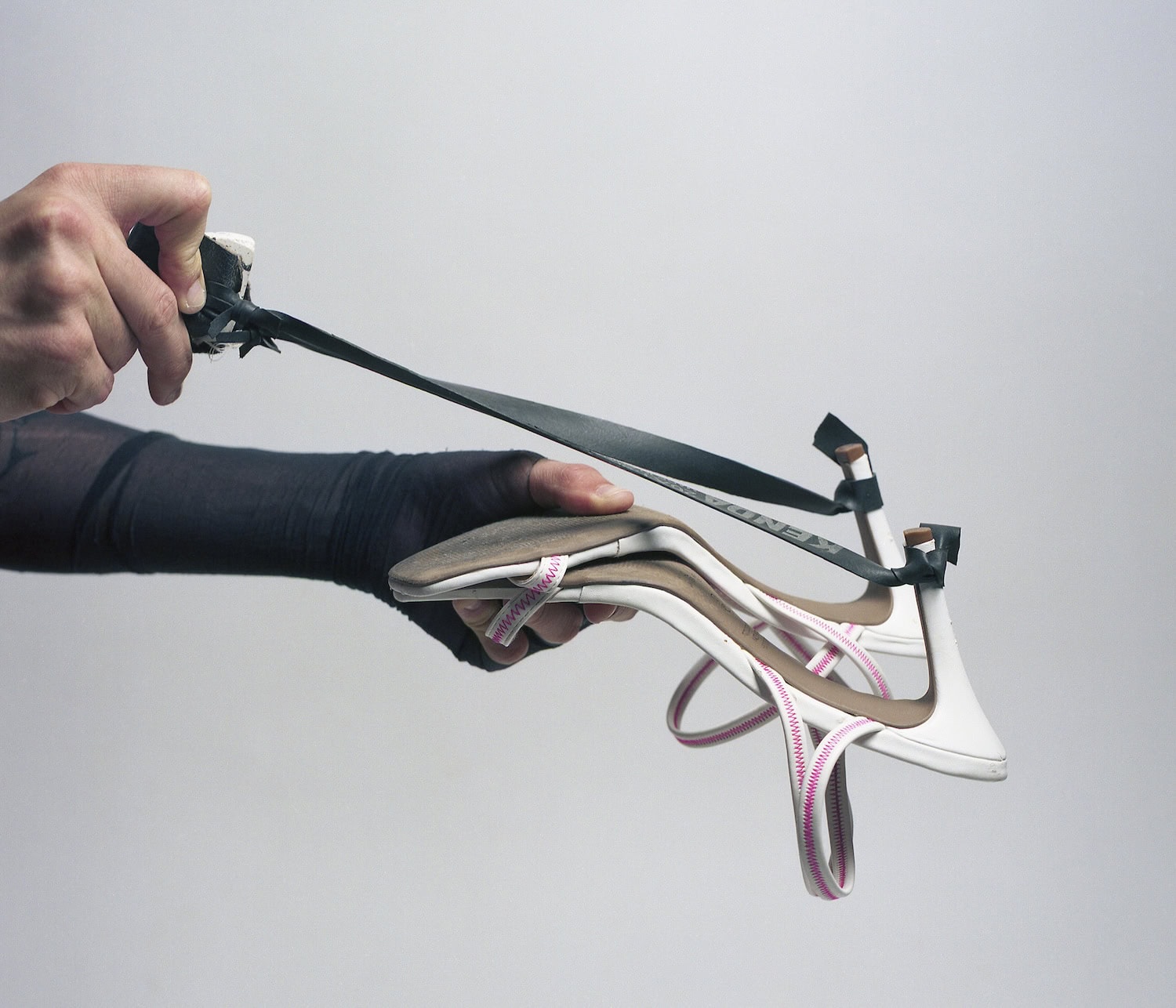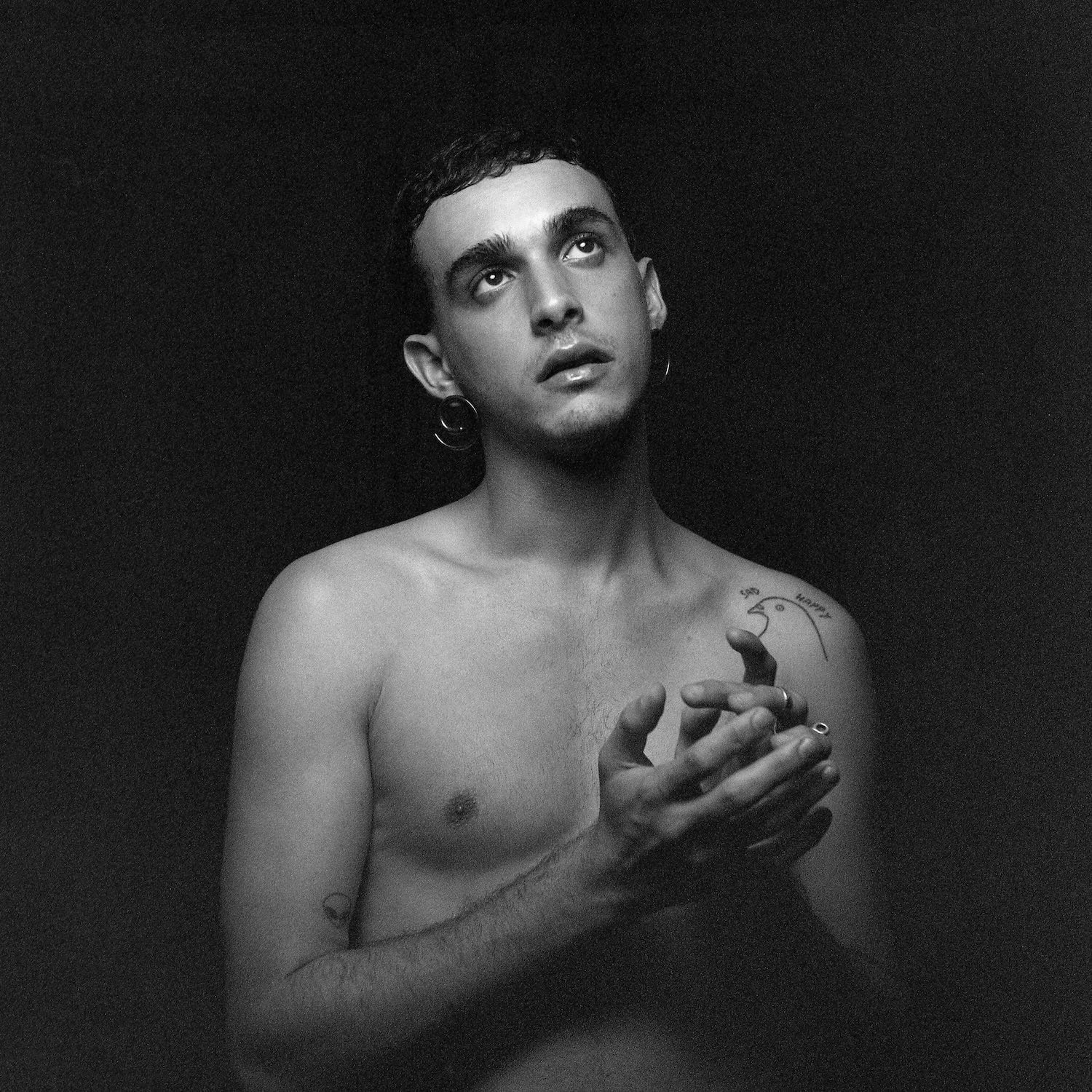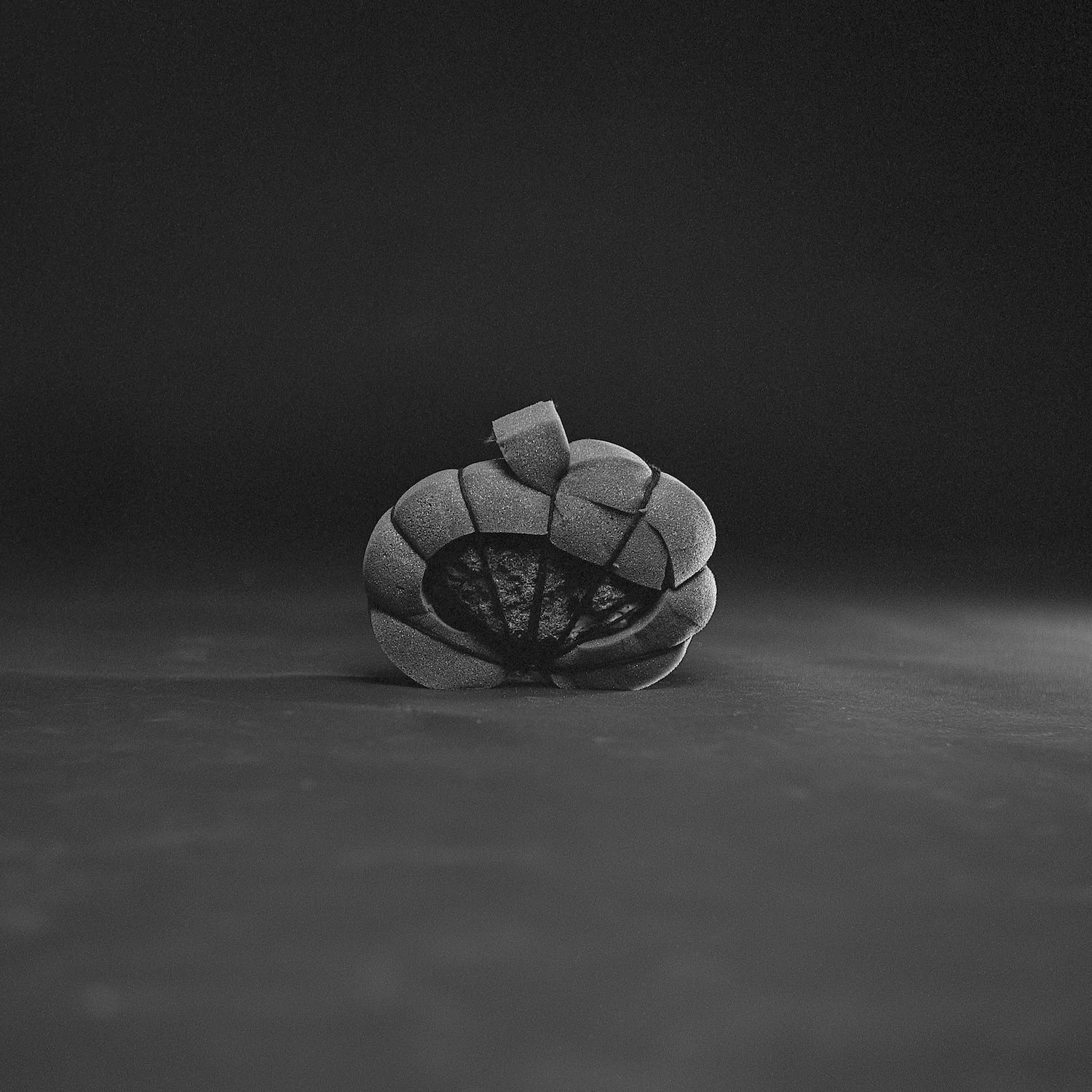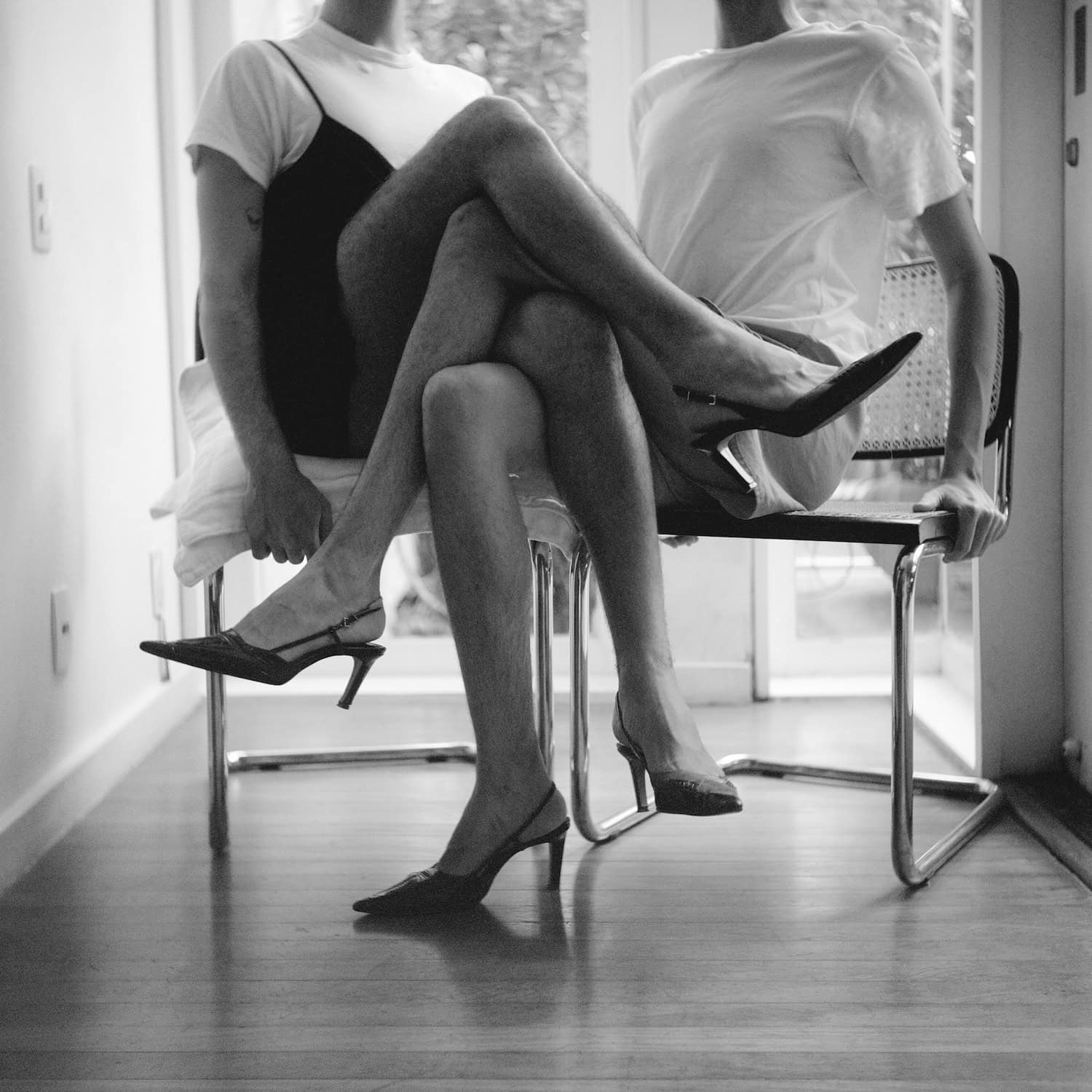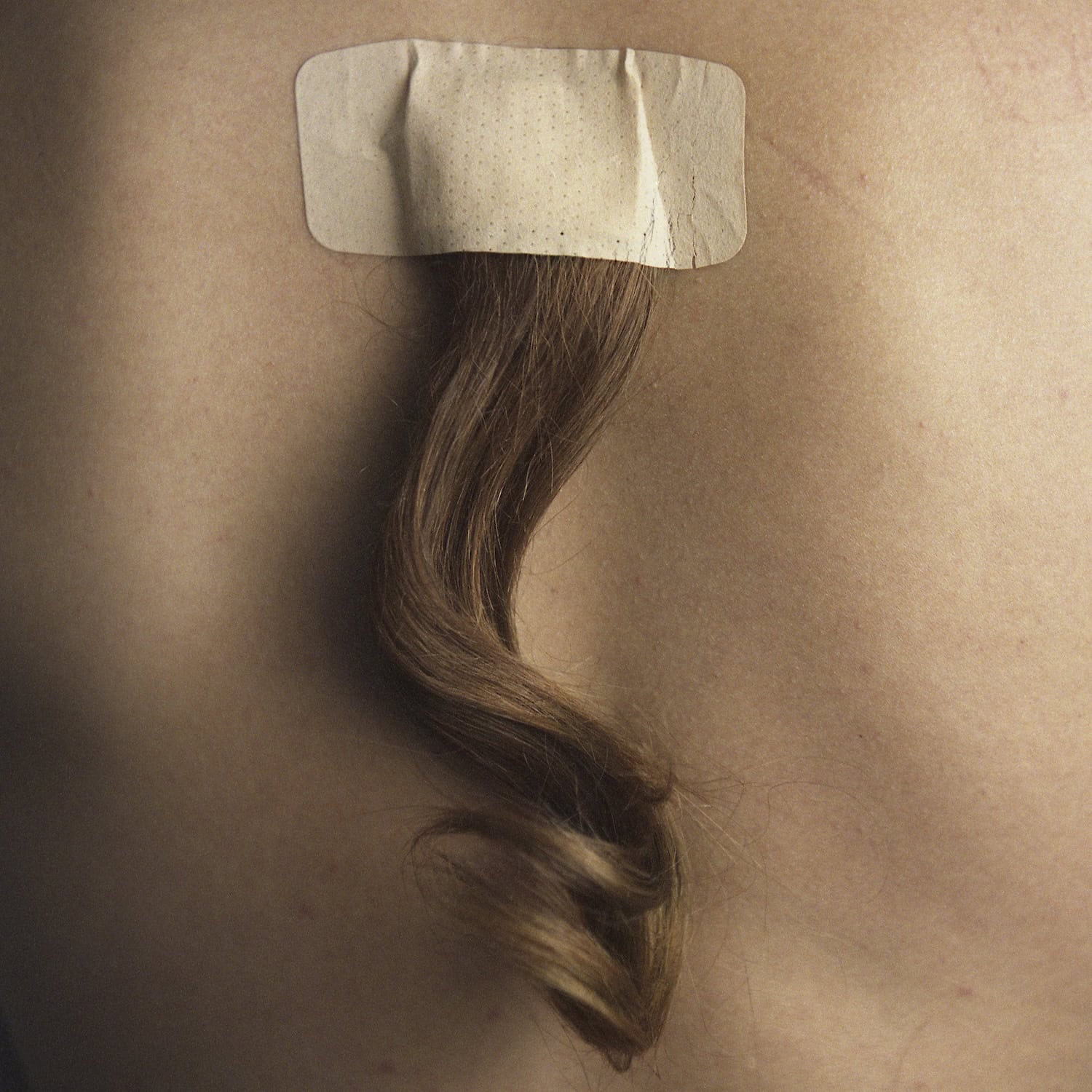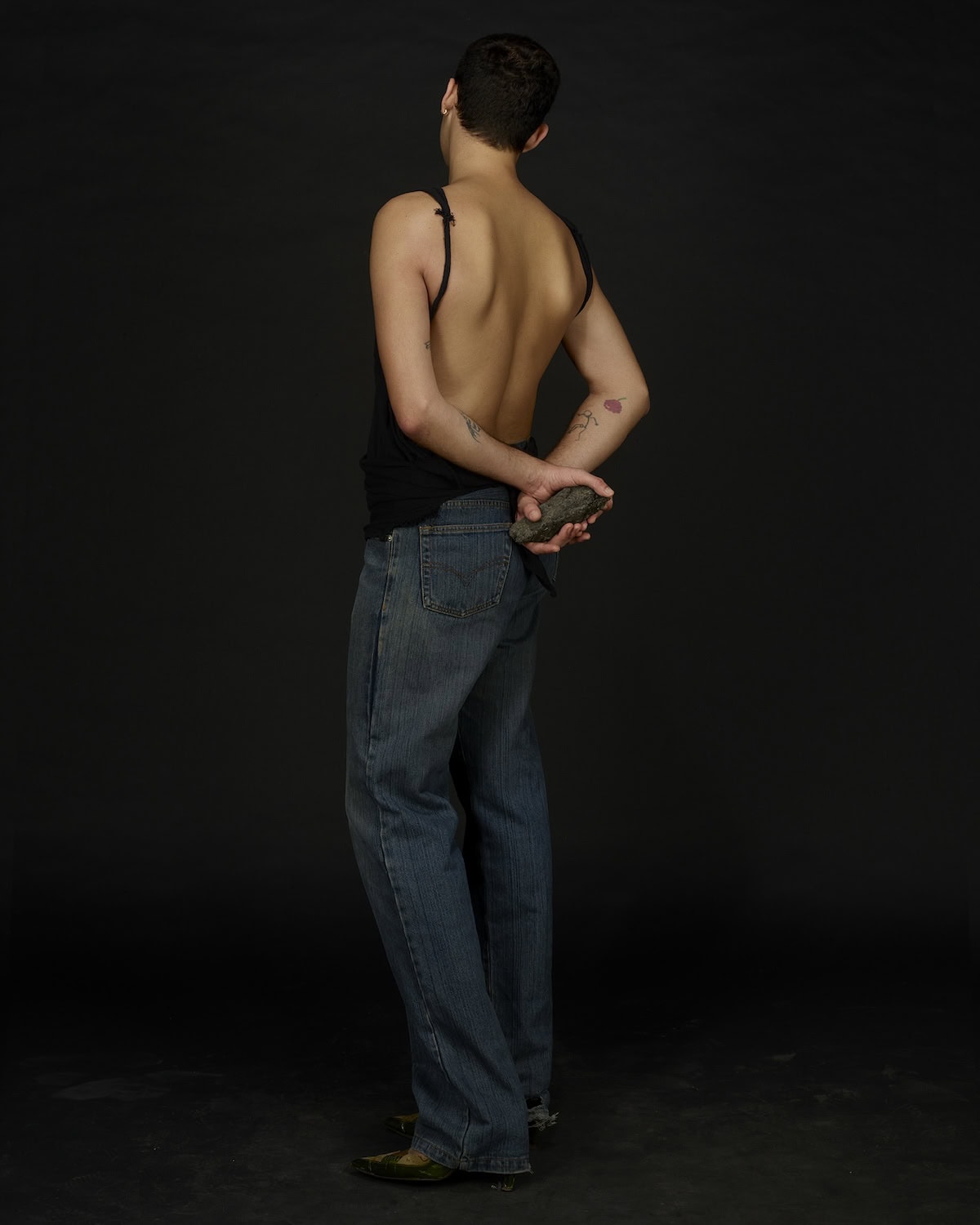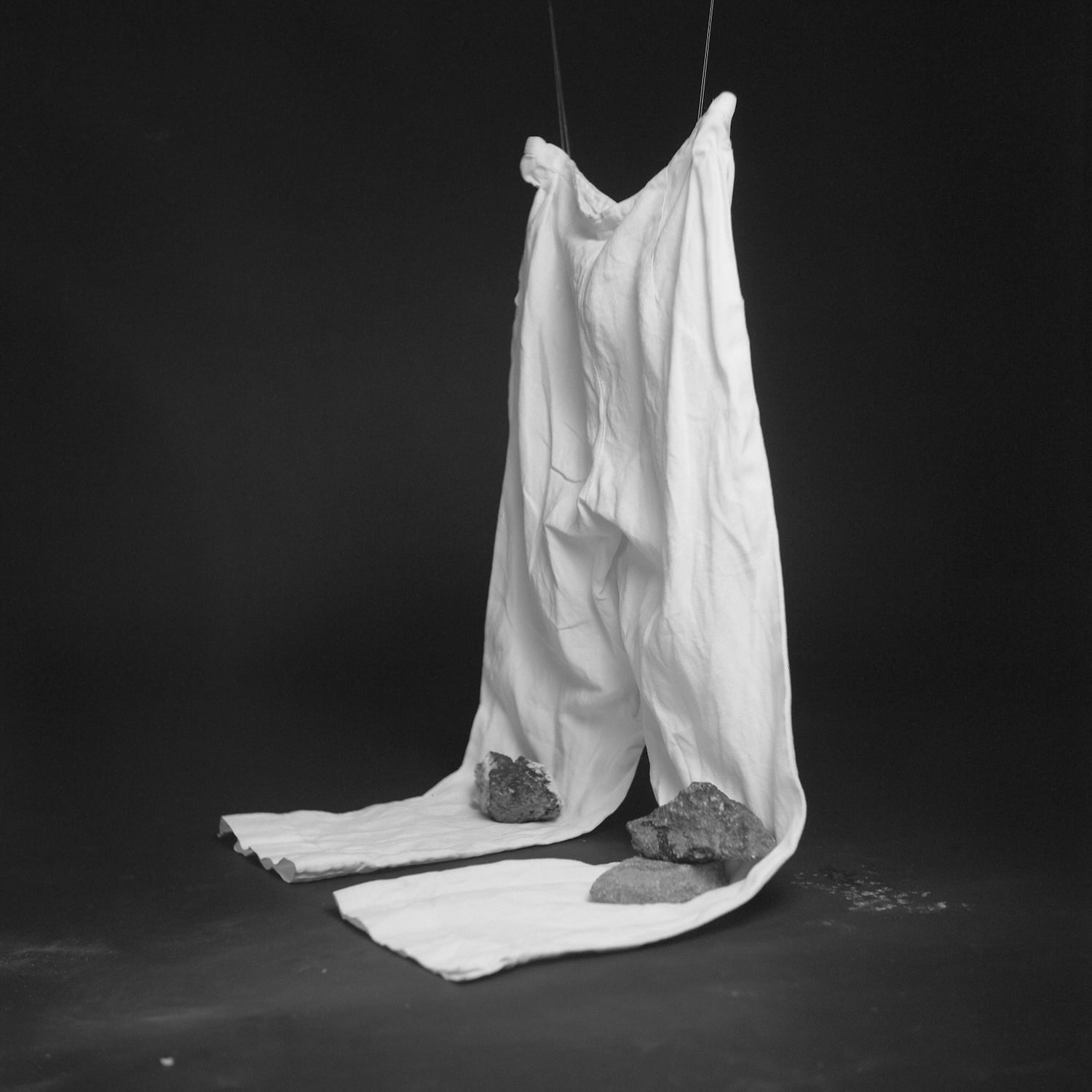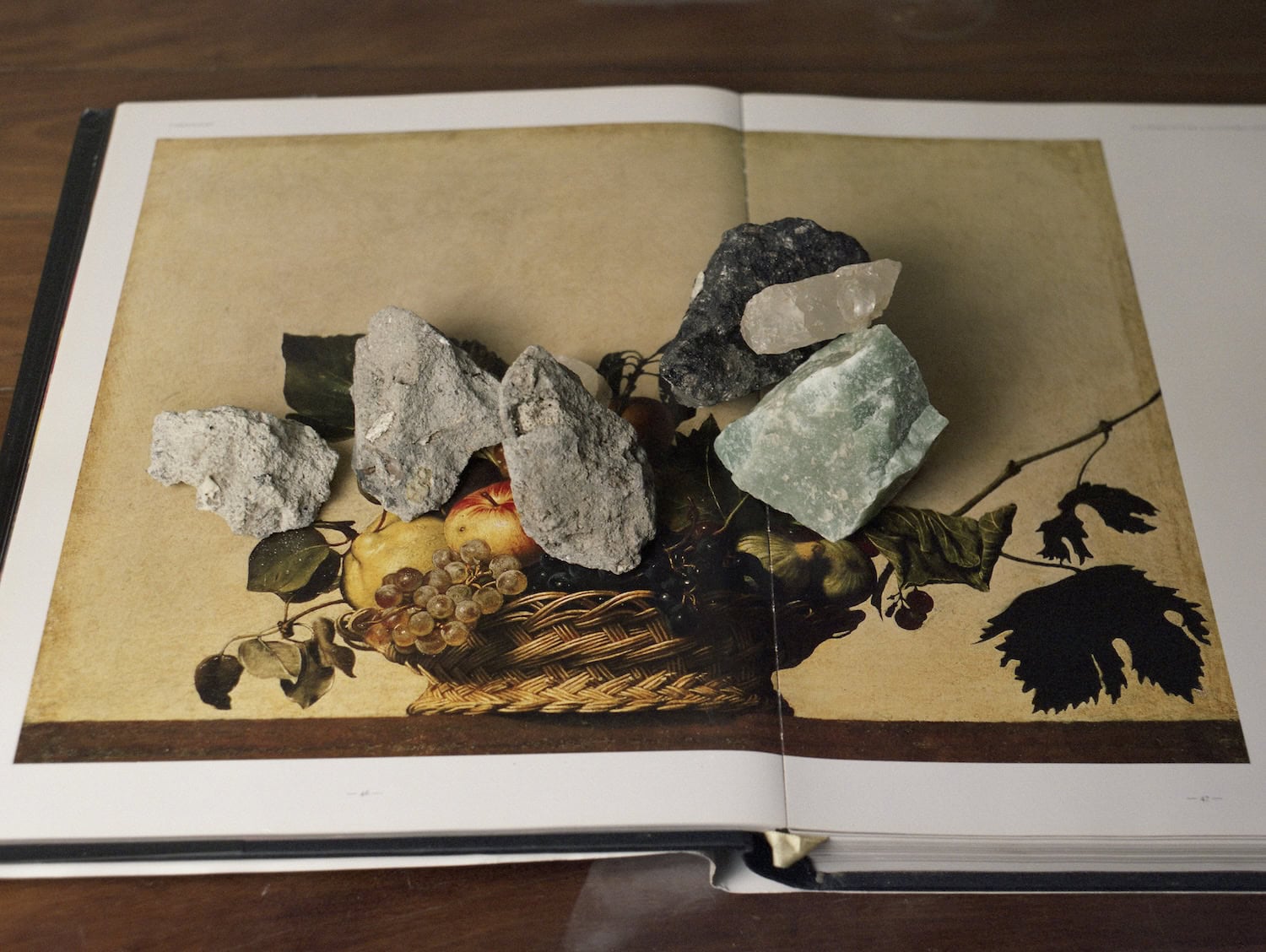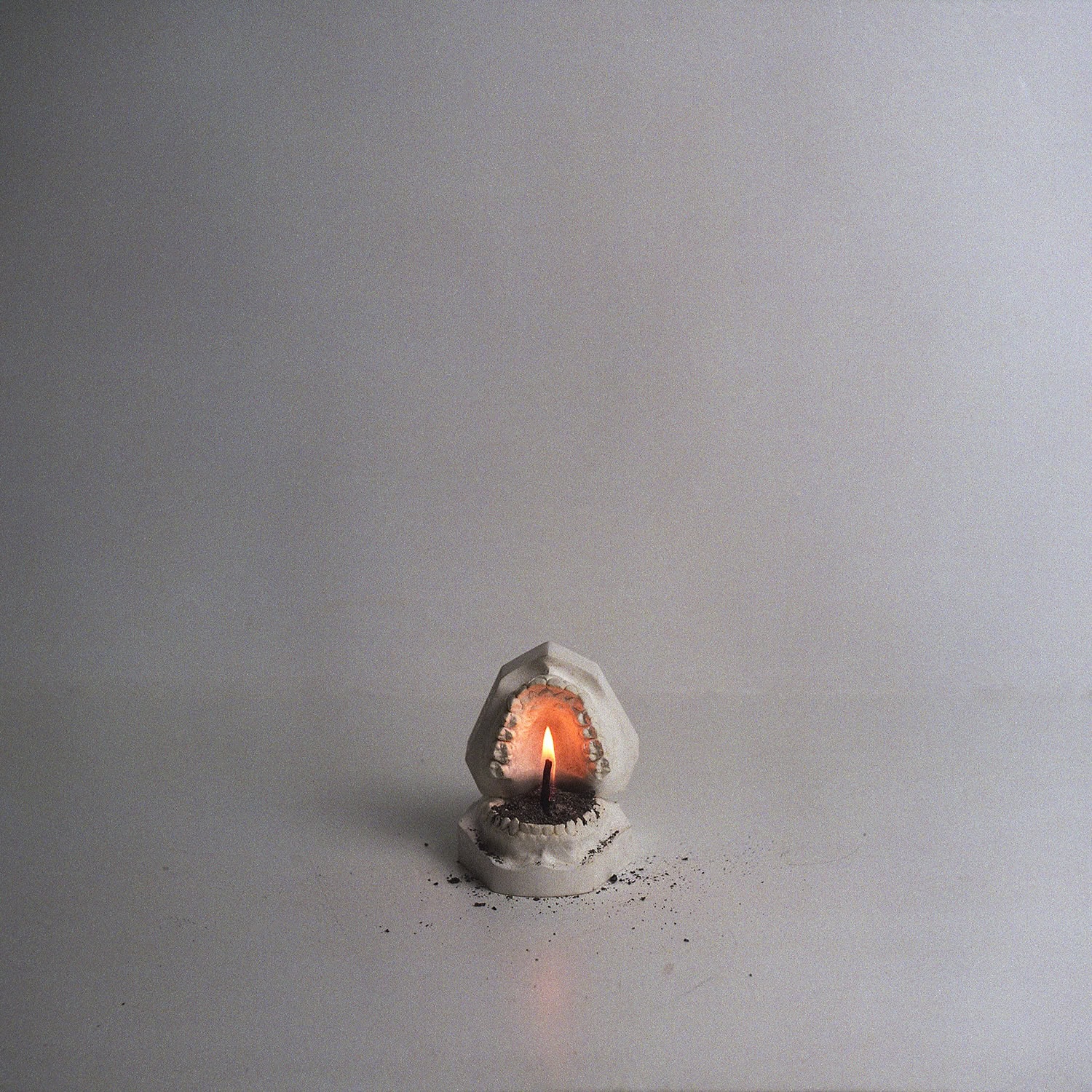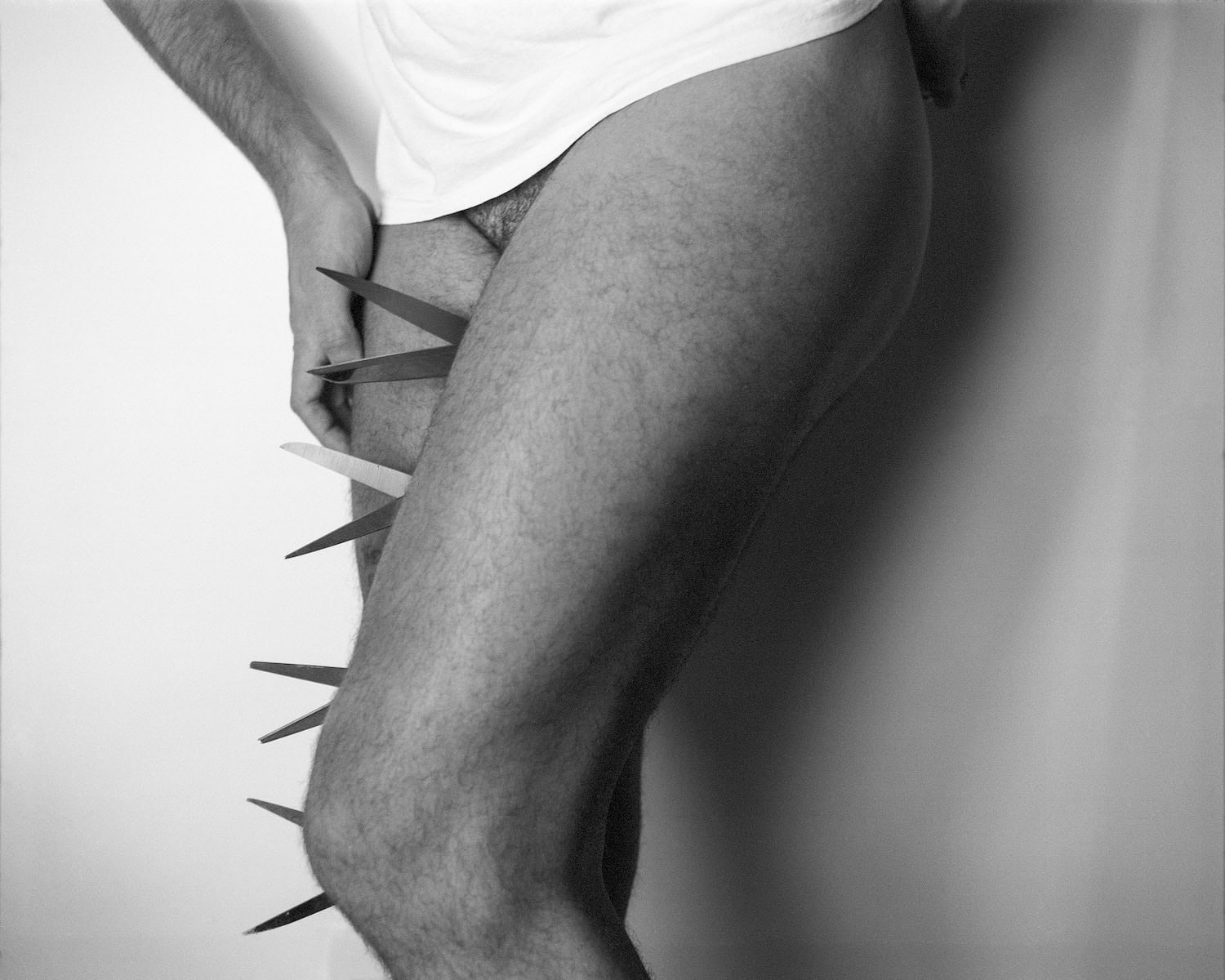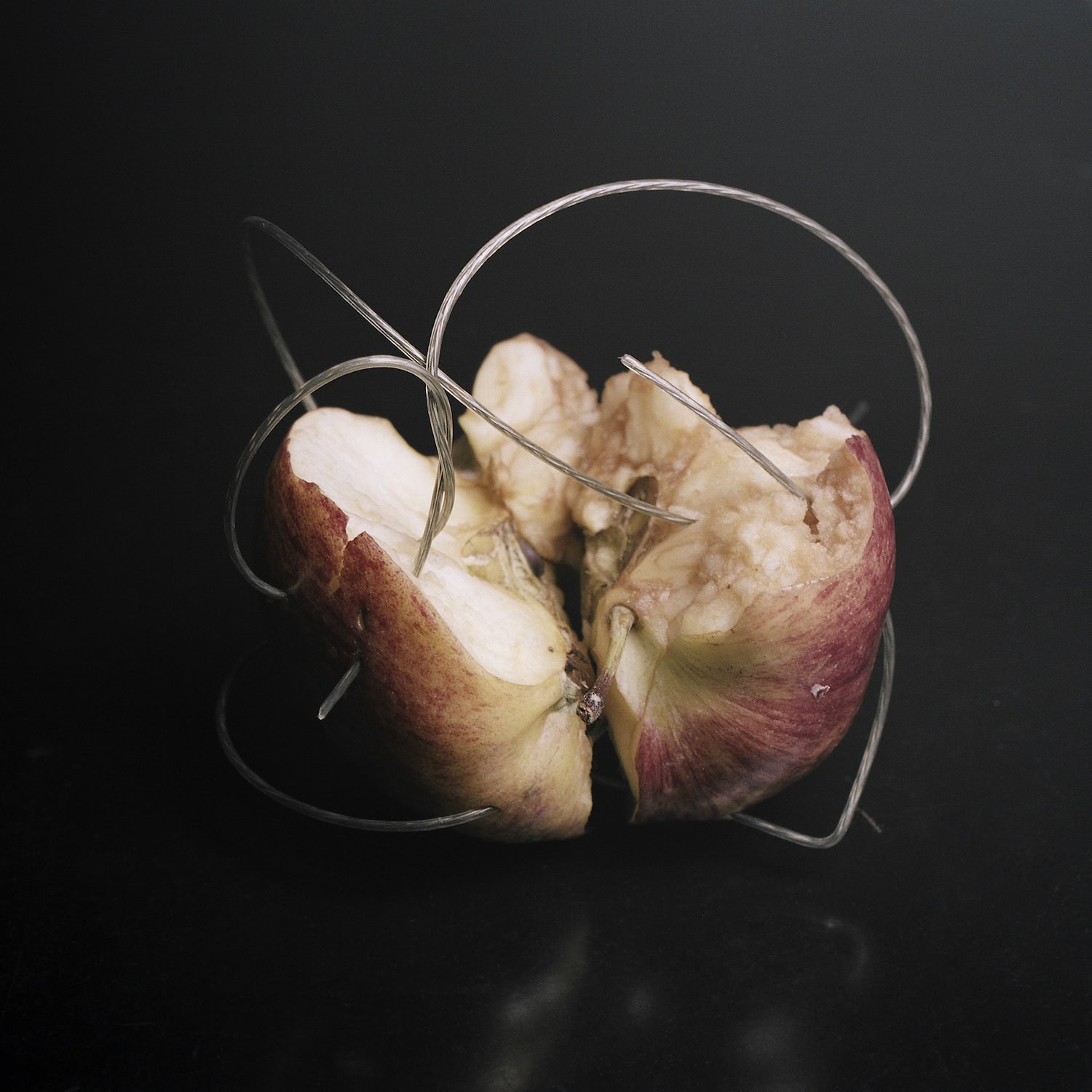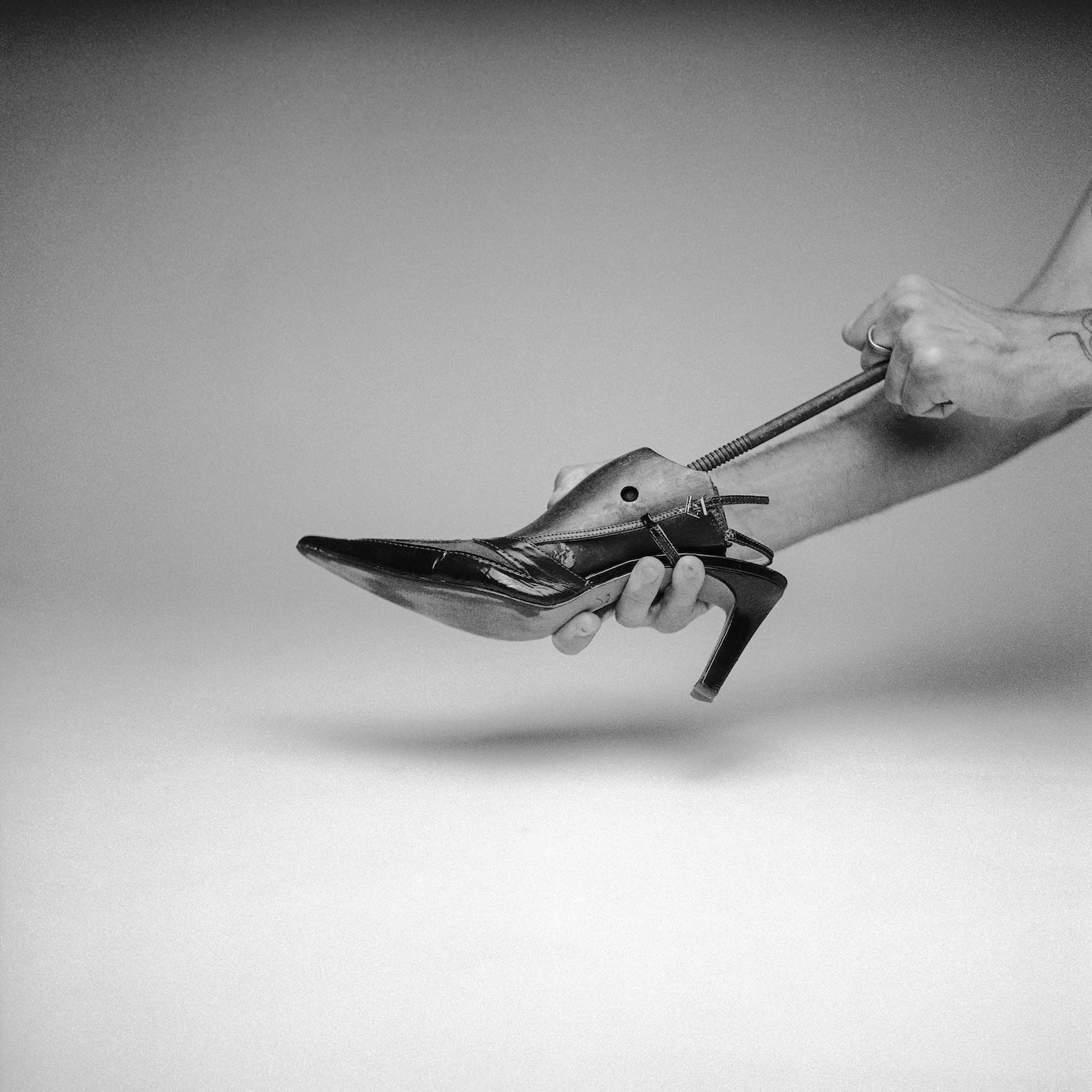Masina Pinheiro (b.1987) and Gal Cipreste (b.1998) are interdisciplinary artists, photographers and educators who live and work in Rio de Janeiro, Brazil. Pinheiro is an educator, who recently taught a master class in Circles of memory and perversion where they talks about their research on dissident childhood and perversion in LGBTIAPN+ photography. On the other hand, Cipreste comes from the music field, being a composer and sound designer.
Their work GH, Gal and Hiroshima is a collaborative photographic series about the experience of being metaphorically stoned in childhood for one’s chosen gender. The project also tackles the experience of body transition and the perception of it in a religious family.
Ilaria Sponda: How was this collaborative project conceived? What does it mean to work collaboratively on an intimate and storytelling project?
Masina Pinheiro and Gal Cipreste: We had painful childhoods in different ways, and these shared experiences somehow connected us. It is quite common for LGBTIAPN+ people to seek to tell stories to each other as a way of making things more audible, surrounded of protection and/or retaliation.
IS: How did you start working together as a duo? Do you also work singularly?
MP and GC: We started working together in 2019, at the very beginning of our relationship and what would become the concept of GH, Gal and Hiroshima. We usually specify how we will work on a project, for example, one will think of the script, the other will create the forms, one will do the pre-production madness, the other will do the bureaucratic madness, etc. We love the idea of working as a duo, and not just as a duo, but in collaboration with other artist friends, with family, with spaces.
IS: What’s the evolution of the project GH, Gal and Hiroshima been?
MP and GC: It has to become a book. We have been working for a couple of years to make this series into a book, a lot of new things, surprises, written accounts. It’s just a difficult project to realize.
IS: How did you arrive at the title?
MP and GC: There is a book by a Brazilian writer, Clarice Lispector, called The Passion According to GH, where she says that “living is an unattainable secret for most people”. Some tend to think about the character “GH” as something similar to “Gender Human”. In our GH, G is Gal’s initial and the H comes from “Hiroshima”, a nickname given by Masina’s grandfather in childhood, simply because they was born on the day of the bomb. And we have a fan fact about bizarre coincidences in the world: Gal was born on the same day as the North American president who authorised the dropping of the bomb. There are so many coincidences and connections that surround us.
IS: How has it been circulating? Where has it been published and exhibited? How has it been perceived?
MP and GC: GH’s first exhibition was during the Rencontres d’Arles Photography Festival, in France, in 2022. We showed the rpoject at the Prix Decouvert Louis Roederer, inside that beautiful church, which was significant for a part of our work in which the Catholic religion was present during Gal’s identity processes. We recently had our first solo show in Paris, at Galeria Saloon/H. We participated in Jaou Tunis 2022, in Tunisia. In the 13th publication of THE EYES, curated by Laia Abril, “[AFTER] CARE”, in 2022. Well, there are some amazing things that have happened in the last 3 years and some others coming soon.
IS: How did it feel to unveil such intimate narrations to the public?
MP and GC: It’s always very difficult to open up about something so intimate. People normally expect spectacularisation from stories like this, they want to see graphically how violence happens and how it develops in our bodies. The way it is shown is not enough, but we’re not looking for voyeurs. We also had to be careful about how we told it, how our parents might feel about being part of the story we tell on GH.
IS: How is the photographic scene in Brazil? How has your work been travelling between Brazil and Europe?
MP and GC: The Brazilian art market, in general, does not understand or research contemporary photography. At the same time, the photography scene, the bubble, has tried to expand the language and include visual artists in its curation. We don’t really know what the fate of all this is. Sometimes it feels like there is very little space. But there are initiatives that persist and create events related to photography, photobooks, fairs, festivals, in relative isolation from other visual arts. I think this is quite common in many countries. There is a lot to say about festivals and their curators. But Brazil is a country of continental size, and there are not enough grants (which are actually very few), incentives, almost no support. There is little generosity outside of small groups. Many curators work only with friends. And yet there is much talent. We are inspired by Brazilian photography and its subjects and topics tackled. We are always researching the possibilities of continuing the conversation between Brazil and other countries! We are looking for spaces that welcome stories and works, especially LGBTIAPN+ artists from many parts of the world. It is very important for us to have an exchange with other body experiences that live in other countries, with other governments and accesses, in short, to be able to think about something increasingly broader.
